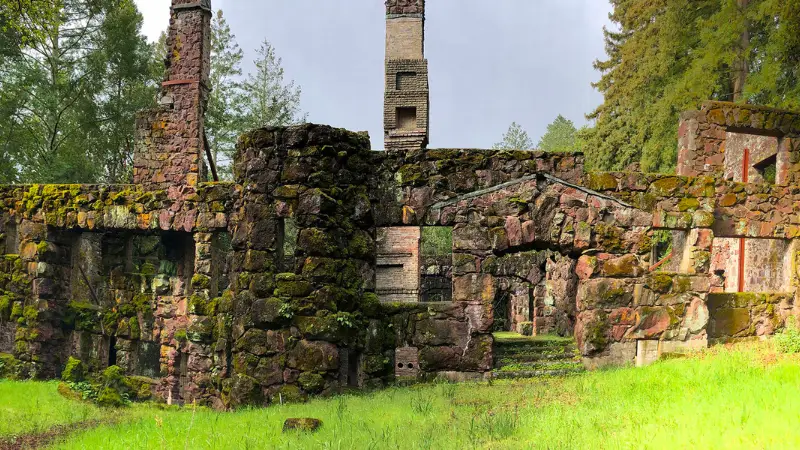Featured Photo: JLPP
Jack London, what a guy! An author: Call of the Wild, White Fang and Martin Eden; an adventurer: The Klondike, Hawaii and Japan; and an activist: Socialism, atheism and journalism. He was born in 1876 and no one is yet sure who his father was. He struggled through years of working and wandering until attending UC Berkeley. Then, at the turn of the 20th century, he became a celebrity author and started making a fortune with his writings.

However, tragically, fire played an ever-present role in his life. The home where he was born in 1876 went down in flames during the 1906 San Francisco earthquake and fire. One of his most memorable quotes went like this: “I would rather be ashes than dust! I would rather that my spark should burn out in a brilliant blaze than it should be stifled by dry-rot.” And many maintain his very life entered a downward spiral when his long sought and beloved dream — Wolf House — was consumed in flames in 1913, just two weeks prior to its completion. Jack London died in 1916; he was only 40-years-old.

Wolf House was (and is) a 26-room, 15,000-square-foot, let’s be honest, mansion with nine fireplaces. Its construction involved coastal redwood timbers and volcanic boulders blasted from nearby canyons. In current dollars it would have cost $2.5 million to build; in the early 1900s, its cost was $80,000. Architect Albert Farr’s Arts and Craft design featured an 800-square-foot library and a two-story living room of nearly 1,200 sq ft. And though this was the early 1900s, the rustic design featured a water heater, refrigeration, electric lighting and a spacious wine cellar.

However, on the evening of August 22, 1913, the dream house was engulfed in flames. Now, only boulders and bricks remained. London and his wife Charmian were despondent; Wolf House was their dream house. Arson was suspected, but never proven. As late as 1995, a forensic investigation laid the blame on a pile kerosene rags that somehow exploded.
The still standing remains of Wolf House are now a part of the Jack London Historical State Park in the village of Glen Ellen in Sonoma County.
Looking for more things to do in the area?
Visit our What to Do in Northern California page!


